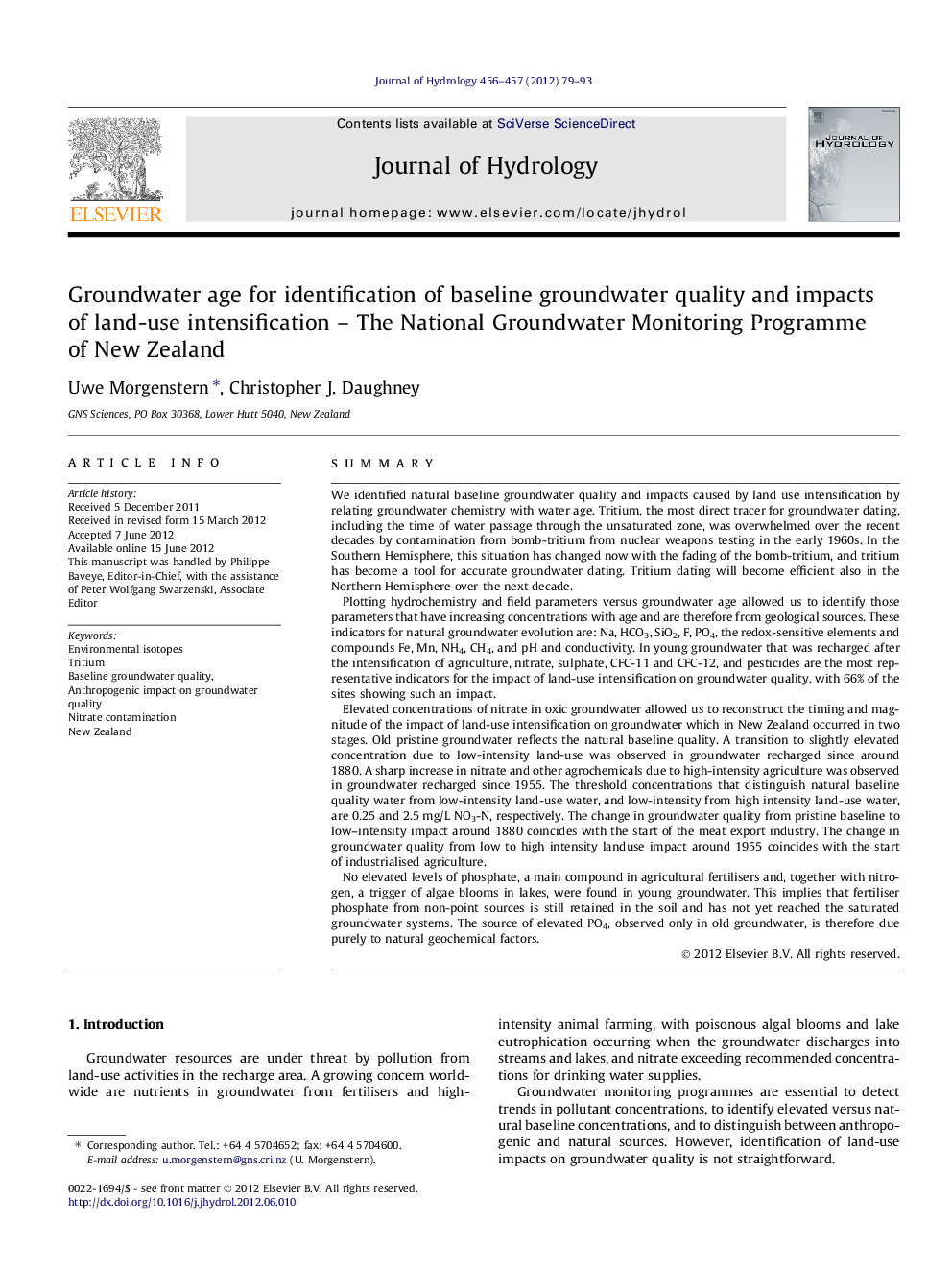| کد مقاله | کد نشریه | سال انتشار | مقاله انگلیسی | نسخه تمام متن |
|---|---|---|---|---|
| 4576871 | 1629983 | 2012 | 15 صفحه PDF | دانلود رایگان |

SummaryWe identified natural baseline groundwater quality and impacts caused by land use intensification by relating groundwater chemistry with water age. Tritium, the most direct tracer for groundwater dating, including the time of water passage through the unsaturated zone, was overwhelmed over the recent decades by contamination from bomb-tritium from nuclear weapons testing in the early 1960s. In the Southern Hemisphere, this situation has changed now with the fading of the bomb-tritium, and tritium has become a tool for accurate groundwater dating. Tritium dating will become efficient also in the Northern Hemisphere over the next decade.Plotting hydrochemistry and field parameters versus groundwater age allowed us to identify those parameters that have increasing concentrations with age and are therefore from geological sources. These indicators for natural groundwater evolution are: Na, HCO3, SiO2, F, PO4, the redox-sensitive elements and compounds Fe, Mn, NH4, CH4, and pH and conductivity. In young groundwater that was recharged after the intensification of agriculture, nitrate, sulphate, CFC-11 and CFC-12, and pesticides are the most representative indicators for the impact of land-use intensification on groundwater quality, with 66% of the sites showing such an impact.Elevated concentrations of nitrate in oxic groundwater allowed us to reconstruct the timing and magnitude of the impact of land-use intensification on groundwater which in New Zealand occurred in two stages. Old pristine groundwater reflects the natural baseline quality. A transition to slightly elevated concentration due to low-intensity land-use was observed in groundwater recharged since around 1880. A sharp increase in nitrate and other agrochemicals due to high-intensity agriculture was observed in groundwater recharged since 1955. The threshold concentrations that distinguish natural baseline quality water from low-intensity land-use water, and low-intensity from high intensity land-use water, are 0.25 and 2.5 mg/L NO3-N, respectively. The change in groundwater quality from pristine baseline to low–intensity impact around 1880 coincides with the start of the meat export industry. The change in groundwater quality from low to high intensity landuse impact around 1955 coincides with the start of industrialised agriculture.No elevated levels of phosphate, a main compound in agricultural fertilisers and, together with nitrogen, a trigger of algae blooms in lakes, were found in young groundwater. This implies that fertiliser phosphate from non-point sources is still retained in the soil and has not yet reached the saturated groundwater systems. The source of elevated PO4, observed only in old groundwater, is therefore due purely to natural geochemical factors.
Nitrate versus mean residence time (MRT) and corresponding calendar year. Green circles indicate oxic waters, red squares indicate anoxic waters, and black crosses indicate unknown. Diamond symbols show data for oxic groundwaters from Lake Taupo catchment.Figure optionsDownload as PowerPoint slideHighlights
► Accurate groundwater ages were determined for our monitoring network using tritium.
► These ages enable identification of land-use impact on groundwater quality with un-preceded detail.
► The timing and threshold concentrations of land-use impact were determined.
► Impacts of natural groundwater evolution were separated from land-use impacts.
Journal: Journal of Hydrology - Volumes 456–457, 16 August 2012, Pages 79–93